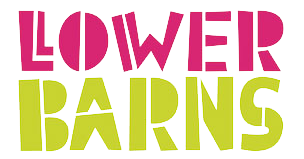Poldark and Cornwall
The love story between Ross Poldark and Demelza Carne is every bit as dramatic as the landscape in which it is set.
You can imagine the dashing British Army captain and the feisty servant girl who would become his wife set against the backdrop of the Cornish coast where they lived. Ross Poldark was heir to a mining business and reminders of the glory days of Cornish tin and copper mines can be found around St Agnes, part of a World Heritage Site.
St Agnes Head still has iconic mine buildings, reminders of the past when the mines Wheal Charlotte, Wheal Coates and Trevellas were still in production. The coast has the last remnants of the heathland which once covered most of Cornwall.
Bodmin Moor is an 80 square mile Area of Outstanding Natural Beauty – the warmest and wettest moor in Britain. Twelve thousand years ago it was a forest, now it’s home to 50,000 sheep, 10,000 cattle, 1,000 horses and 500 buildings, but very few trees.
The moor is dominated by granite tors towering over expanses of open moorland. Perhaps the most famous is Brown Willy, the highest point in Cornwall at 417 m (1,368 ft).The marshes and bogs on the higher ground drain into shallow moorland valleys then into rivers that carve deep river valleys, protecting oak woodland. It’s a mystical landscape that has inspired writers, poets and sculptors and generated folklore, legend and ghost stories.
One of the most famous natural features of Bodmin Moor is the Cheesewring, a 30ft-wide pile of flat granite boulders believed to have been shaped over thousands of years by glacial movements and erosion. It gets its name from the cheese-making process.
Porthcothan Bay
PL28 8LP
Porthcothan
Cornwall proved to be the perfect location when it came to filming Winston Graham’s Poldark novels, which begin in the late 1700s, because much of the coastline has remained undeveloped.
Porthcothan, a tiny bay between Newquay and Padstow, is typical of much of this area. There’s a good sandy beach which becomes much larger at low tide, backed by grassy dunes and cliffs. Although the waves can – like the rest of the north Cornish coast – be impressively grand here, they are in the main accessible to inexperienced surfers.
Suitable locations to film Ross’s return to his homeland, they were able to use Charlestown – a harbour virtually unchanged since its development by local landowner Charles Rashleigh (hence the name) during the Georgian period for the export of copper and china clay from the Westcountry around the world.
In the early 1800s, the port would be bustling with ships arriving and departing and all the businesses associated with the trade – boatbuilding, rope-making and victuallers. Many of the Georgian houses which were built at the time have been well preserved and the harbour is still home to a fleet of period square rigger ships.
Cant wait for sunday to see more of this coast line and of course Ross poldark !
From coast2coast Cornwall is a wonderful destination for family fun to salty kisses, bespoke wedding’s and boutique accommodation.
